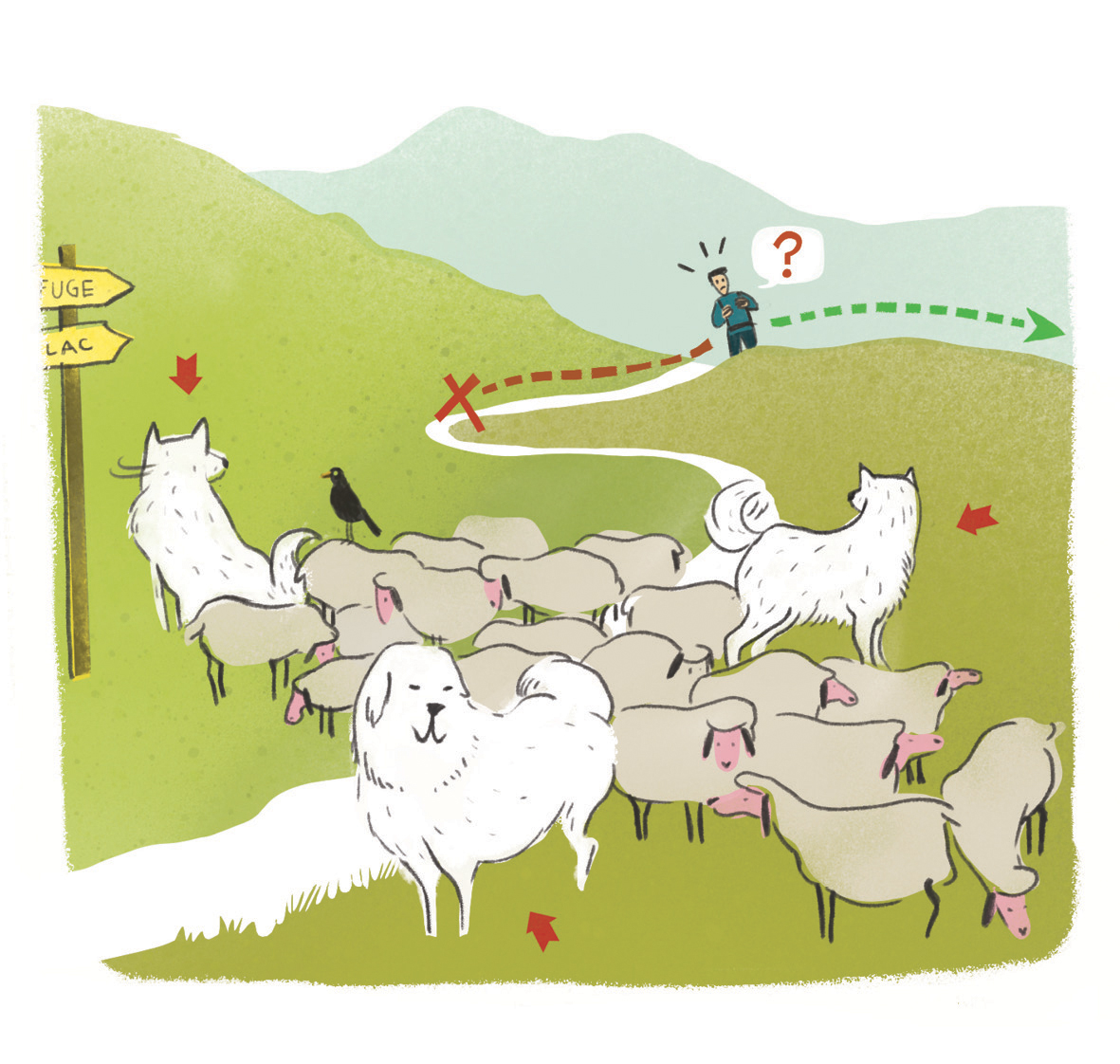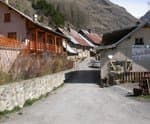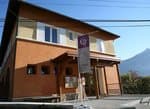Les Aiguilles de Chabrières
This hike has a wonderful belvedere over Réallon and the Gap area. It will be a delight for geology enthusiasts as they go over the Oucanes or come close to the Aiguilles de Chabrières.
7 points of interest
 Flora
FloraMilk Vetch
The astragalus alopercurus (from alopex: fox and oura; tail) is a spectacular plant due to its size. It has long leaves with many leaflets. It blossoms when the weather gets warmer and shows off a beautiful cluster of flowers at the top of a tall hairy stem. Several yellow corolla grow out through thick protective hair to take in the sunshine and the warm summer winds. Fauna
FaunaYellow-billed chough
A high flying, mountain top acrobat, the yellow-billed chough is also very talented at gathering leftovers from the walkers' picnics. It usually moves in groups and brightens up its passage with a flute-like sound that is easy to recognise. This black bird has a yellow beak and red feet, and is a much a companion to mountaineers as it is to daydreamers. Geology and geography
Geology and geographyThe Chabrières Oucanes
The Oucanes that can be seen on this walk are strange geological formations that are quite original for the Ecrins massif. The karst that they are made of is thick limestone and dolomite that is part of the Briançon fragment of Chabrières. In a limited space, the Oucanes make it possible to observe the characteristics of alpine karst: limestone pavement, meandering ribs, small rock pools, corridors with ribbed walls and Vaucluse karst springs. Fauna
FaunaThe Golden eagle
The golden eagle, a large bird of prey and emblematic of mountain regions, regularly nests between Piolit and the Aiguilles de Chabrières. Boasting a wingspan of over 2 metres, it is one of the largest eagles in the world. It has an absolute command of gliding and, using updrafts, can climb to great heights to survey its territory. It is also capable of lightning-fast acceleration when swooping on prey. In the past, like all birds of prey, it was hunted down by humans, which led to its disappearance from many parts of the world. But today it is protected by law throughout Europe and its populations are doing quite well. So look up and open your eyes: you might just be lucky enough to see it gliding over the ridges in search of a marmot, its favourite prey!
 Fauna
FaunaRock partridge
The rock partridge is a gallinacean, like the ptarmigan, and is easier to observe during the spring courting period. As it stands on a promontory to sing a broken song, the rock partridge is recognisable due to its grey back, white sides and throat, and its red beak. It lives in the sun on the well-exposed slopes of the mountains and likes rocks and open moors. Here its young can feed on the insects necessary for their growth. Fauna
FaunaChamois
The creation of the National Park has enabled the chamois, emblematic animal of the Alps, to settle again in the Ecrins massif. It has short curved black horns and is a close relative of the antelope. It has a particularly well developed sense of smell and hearing. It is consequently difficult to approach. Females and kids like to group together in herds, whereas the males keep their distance until the mating season in October-November. Flora
FloraPasque flower
If all pasque flowers are identifiable by their thick but soft hairiness, unlike anemones, when they reach maturity they also have a characteristic head of scruffy hair, made up of numerous fluffy white seed heads that will get blown away by the wind. In this family, the pasque flower is the most glamorous and most beautiful. It has the advantage of flowering in spring and displays a remarkable purple-black corrola among the grass that has been faded by the winter.
Description
From the car park, take the Joubelle forestry track. After a bend left, follow it for 500 m. Then take a footpath that leads right and climbs rapidly into the forest, it is way tracked with an orange and a blue spot. Cross the Serre du Mouton pastures (caution, the arrows on the signs are not always correct). After a flat terrain, the route climbs again to an unobstructed hillcrest from where it is possible to see the Serre Ponçon lake. The route follows the crest that leads to the top of the Chabrières chairlift and an observation point. Continue on the visible footpath (which is now ondicated by a blue spot alone) that descends slightly and continues on a ledge to link up to the foot of the corridor before climbing up again to the Chabrières gap. The footpath continues up and across until it reaches the summit that overlooks the Gap basin. From there it is possible to go to the summit of Chabrières, which takes 15 minutes (steep, non-sign-posted route. Not recommended with children) The footpath skirts the Oucanes and continues down towards the Rougnous plateau that it then crosses. It then winds into a valley and joins up with a footpath coming from the Font-Renarde mountain hut that is visible below. Continue on the footpath and link up with the ski slopes that lead to the car park.
- Departure : Stazione di Réallon
- Towns crossed : Réallon, Saint-Apollinaire, and Prunières
Altimetric profile
Recommandations
In June, the late névé can sometimes hide the footpath and the signs. A flock is present on the pastures and "Patou" dogs ensure their protection Avoid passing through the flock.
 In mountain pastures, protection dogs are there to protect the herds from predators (wolves, etc.).
In mountain pastures, protection dogs are there to protect the herds from predators (wolves, etc.).
When I hike I adapt my behavior by going around the herd and pausing for the dog to identify me.
Find out more about the actions to adopt with the article "Protection dogs: a context and actions to adopt".
Tell us about your meeting by answering this survey.
Information desks
Information center "les Gourniers" (summer only)
Les Gourniers, 05160 Réallon
Les Gourniers
05160 Réallon
Tel :
embrunais@ecrins-parcnational.fr
Maison du Parc de l'Embrunais
Place de l’Église, 05380 Châteauroux-les-Alpes
Information, documentation, exhibition, screenings, products and books of the Park. Accessible to people with reduced mobility. Free admission. All animations of the Park are free unless otherwise stated.
Transport
Shuttle possible from the Chorges train station to Réallon. Be sure to reserve 36 hours in advance at 05voyageurs or by calling 04 92 502 505.
Access and parking
Several possible routes: from Chorges via Saint Appolinaire (D9), from Savines-le-Lac via Chérines (D41) and from Embrun by the Route des Puys (D9)
Parking :
Source

Report a problem or an error
If you have found an error on this page or if you have noticed any problems during your hike, please report them to us here:

